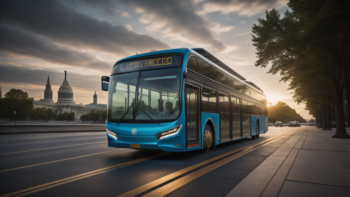
10. Autonomous Drive
Listing Category by product
Autonomous Drive worldwide
Autonomous driving technology is rapidly advancing worldwide, with numerous companies and governments investing in research, development, and deployment efforts. Here’s an overview of the current state of autonomous driving across different regions:
- North America:
- The United States is a major hub for autonomous driving technology development, with companies like Waymo, Tesla, Cruise (GM), and Uber leading the way.
- Waymo, a subsidiary of Alphabet Inc. (Google’s parent company), operates a commercial autonomous ride-hailing service in select cities in the United States.
- Tesla offers a semi-autonomous driving system called Autopilot, which is available in its vehicles and receives regular updates to improve functionality and safety.
- Europe:
- European countries are actively investing in autonomous driving research and development, with Germany, Sweden, and the Netherlands emerging as key players in the field.
- Companies like Volvo, BMW, and Daimler are conducting extensive testing of autonomous vehicles on European roads.
- The European Union has established regulations and standards to support the development and deployment of autonomous driving technology across member states.
- Asia-Pacific:
- China is a major player in the autonomous driving market, with companies like Baidu, Tencent, and Huawei investing heavily in research and development.
- Baidu’s autonomous driving unit, Apollo, is one of the leading platforms for autonomous vehicle development, offering an open-source software platform for developers.
- Japan and South Korea are also actively pursuing autonomous driving technology, with companies like Toyota, Honda, Hyundai, and Samsung investing in research and development efforts.
- Other Regions:
- Countries in the Middle East, such as the United Arab Emirates and Saudi Arabia, are exploring the potential of autonomous driving technology to enhance transportation and mobility.
- Australia and New Zealand are also investing in autonomous vehicle research and development, particularly in the areas of urban planning and infrastructure.
Here are some key points about autonomous driving:
- Levels of autonomy: The Society of Automotive Engineers (SAE) has defined six levels of autonomy, ranging from Level 0 (no automation) to Level 5 (full automation). At higher levels of autonomy, vehicles can perform all driving tasks without human intervention, including steering, acceleration, and braking, in all conditions and environments.
- Benefits of autonomous driving:
- Safety: Autonomous vehicles have the potential to significantly reduce traffic accidents and fatalities by eliminating human error, which is a leading cause of accidents. AI algorithms can detect and respond to hazards faster and more accurately than human drivers.
- Accessibility: Autonomous driving technology has the potential to improve mobility for individuals who are unable to drive due to age, disability, or other reasons. Self-driving vehicles could provide convenient transportation options for the elderly, disabled, and underserved communities.
- Efficiency: Autonomous vehicles can optimize routes, reduce congestion, and improve traffic flow by communicating with each other and traffic infrastructure. This could lead to shorter travel times, reduced fuel consumption, and lower emissions.
- Productivity: With autonomous driving, passengers can reclaim time spent behind the wheel for other activities, such as work, entertainment, or relaxation. This could transform the driving experience and enhance productivity during commutes.
- Challenges and considerations:
- Technological challenges: Developing fully autonomous vehicles requires overcoming technical hurdles related to sensor accuracy, AI decision-making, real-time data processing, and system reliability. Ensuring the safety and reliability of autonomous systems remains a significant challenge for manufacturers and regulators.
- Regulatory and legal framework: The deployment of autonomous vehicles requires clear regulations and standards to address liability, insurance, licensing, and ethical considerations. Governments and regulatory agencies worldwide are working to establish frameworks to govern the testing and deployment of autonomous driving technology.
- Ethical and social implications: Autonomous driving raises ethical questions regarding decision-making in critical situations, such as accident avoidance. There are also concerns about job displacement for professional drivers and potential impacts on urban planning and infrastructure.
- Current state of autonomous driving:
- While significant progress has been made in autonomous driving technology, fully autonomous vehicles capable of operating in all conditions and environments are not yet widely available for consumer use. Most autonomous vehicles currently in development are at Level 2 or Level 3 autonomy, requiring human supervision and intervention in certain situations.
- Companies such as Waymo, Tesla, Cruise (owned by GM), and others are leading the development and testing of autonomous driving technology. They conduct extensive testing on public roads and in controlled environments to improve system performance and safety.
Autonomous Drive technology is a global phenomenon, with significant progress being made in research, development, and deployment efforts across different regions.















